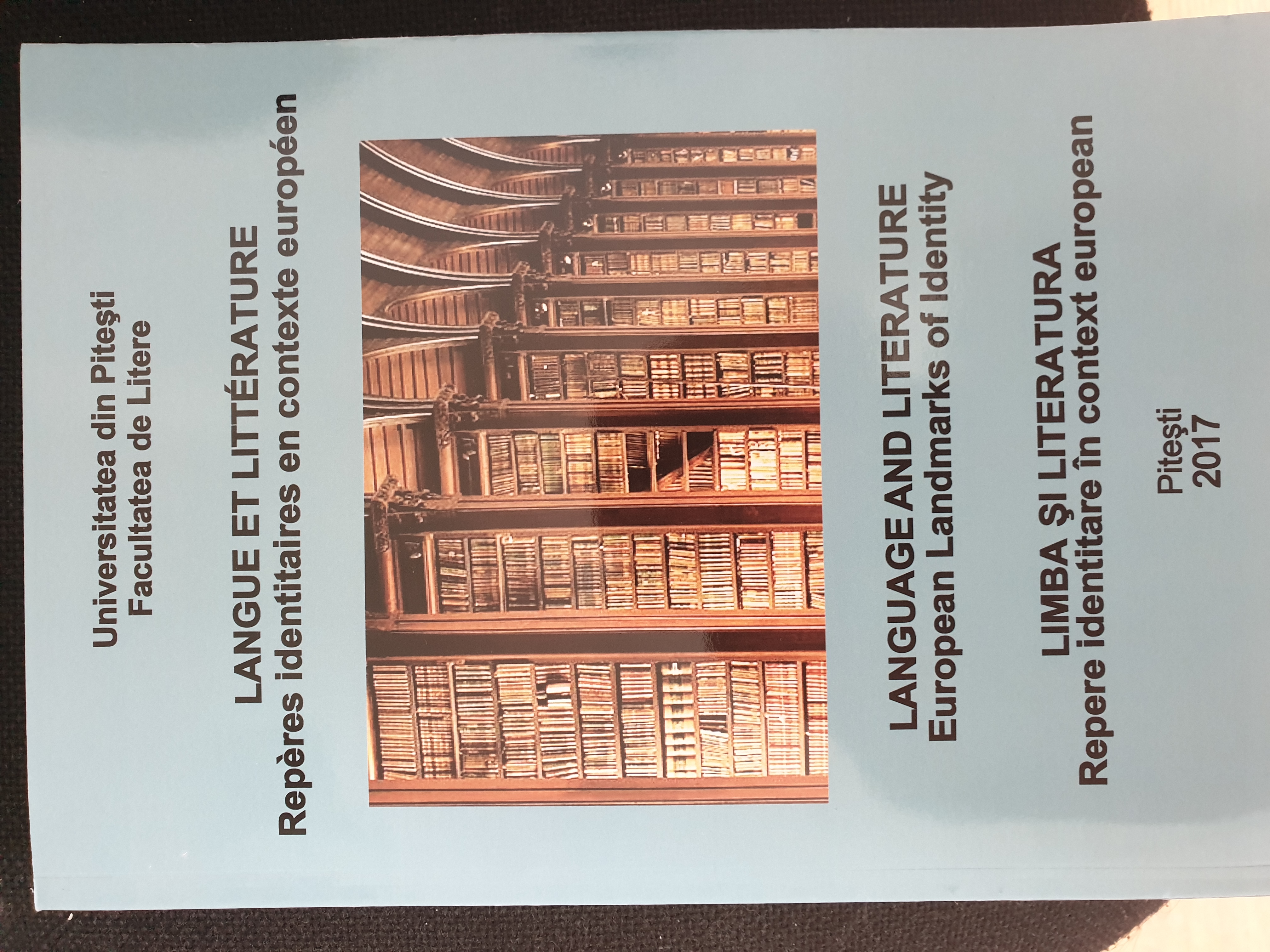FEMININE HYPOSTASES IN IOANA PÂRVULESCU’S NOVEL
THE INNOCENT
FEMININE HYPOSTASES IN IOANA PÂRVULESCU’S NOVEL THE INNOCENT
Author(s): Ileana Lavinia GeambeiSubject(s): Language and Literature Studies
Published by: Editura Universităţii din Piteşti
Keywords: feminine hypostases; childhood; maturity; affective memory; communism
Summary/Abstract: Inocenţii (The Innocent), published in 2016, in Bucharest, is the third novel by Ioana Pârvulescu after Viaţa începe vineri (Life Begins on Friday, 2009) and Viitorul începe luni (Future Opens on Monday, 2012). Inocenţii (The Innocent) is built on the role of memory, especially of affective memory, as the author herself suggests from the beginning, by choosing Dostoyevsky’s motto: “He who gathers as many such memories as he can for the whole life can be sure that at some point will find refuge in them” (Dostoyevsky, The Brothers Karamazov, in a speech given by Alyosha to the children). The novel proposes a „then” and „now” perspective on the world. As a matter of fact, the two perspectives stand for the basic feminine hypostases in the novel: Ana the little girl and Ana the mature woman who keeps the child alive in her memory and soul. The two hypostases of the same woman, each with her charm and peculiarities complement each other and represent two stages in Romania’s recent history: communism and post-communism. Communism is the period that characterizes the first feminine hypostasis, Ana the little girl, while the second hypostasis always looks back with maturity, which makes the past to become a lesson about her history and injustices. There are two temporal plans that identify childhood: the one prevailing childhood spent in Braşov, especially in the 1960s, and the complementary one - at an adult age – that comments and completes the former, but in which the narrator still reserves the provocative role of the innocent. In fact, the actions in the city at the foot of Tâmpa hill, evoked in the novel were experienced by little Ana, but they were only evinced by the testimony of her adult hypostasis. Starting from these premises, the present paper follows the way in which the two feminine hypostases are built and completed in the novel, rendering a cyclical perspective on life, childhood being both a starting point and a destination
Journal: LIMBA ȘI LITERATURA – REPERE IDENTITARE ÎN CONTEXT EUROPEAN
- Issue Year: 2017
- Issue No: 20
- Page Range: 112-117
- Page Count: 6
- Language: English

